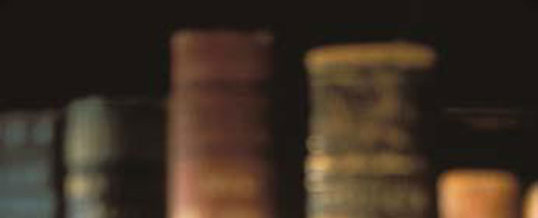
PARSHAT RE’EH
In Parshat Re’eh, Moshe reviews the laws of kashrut. The Torah says that these laws separate us from the Nations and make us a holy people by precluding us from eating detestable things. (Devarim 14: 2-3, 21) Inasmuch as kashrut is such a defining aspect of Judaism and indeed of the Jewish People, it seems worthwhile to look at kosher rules a bit more closely. In doing so, we consider not only the Written Law found in the Chumash but also the Oral Laws that have come down through the Talmud.
With mammals, the Torah states that the animal must be a ruminant that both chews its cud and has split hooves. Classically, we associate cows and sheep as the permitted mammals, eating beef and lamb. Deer also would be permitted, making venison potentially kosher. Goats, too. For that matter, even giraffes.
To determine whether an animal’s meat is kosher to consume, we next must be assure that it is slaughtered properly. Among other things, the shochet (slaughterer) must use a specific kind of rectangular knife called a “chalef” and assure its utter sharpness, bereft of any nicks, often sharpening it on a whetstone. The knife may not rip at the animal’s skin or puncture it but instead, without any pause, must achieve a rapid smooth slicing incision that severs both the trachea and esophagus promptly. Therefore, the knife’s blade is at least twice the width of the area being slaughtered. If the slaughtering errs, the meat is forbidden even though the mammal was a permitted species. The slaughterhouse then will have to absorb a financial loss for that animal and often will mitigate by selling the improperly shechted (slaughtered) animal to a non-kosher facility for them to finish producing and marketing. Any unrecovered financial loss from the lost animal will be externalized into the final pricing of the other meat — the kosher meat — that makes it from that slaughter facility to the butcher.
Even if the slaughter is successful, as it usually is, the shechted animal’s lungs next must be inspected. If the lungs are found to have adhesions, particularly larger ones, that finding can render the animal non-kosher. The bodek (lung inspector) can determine which lung adhesions disqualify the slaughtered animal from being kosher. Again, lost animals will be mitigated where possible, and losses will be externalized to the kosher consumer, contributing to the higher cost of kosher meat. The simplest lung-inspection result is when the slaughtered animal’s lungs are found to be smooth. (“Glatt” is Yiddish and “Chalak” is Hebrew for “smooth.”) If smooth, with no adhesions, then the properly slaughtered meat is acceptable. It still ultimately will need to be soaked and salted, drained of its blood.
A quarter-century ago, kosher consumers were not particular about whether meat was from an animal found to have had smooth lungs. If it had adhesions, consumers knew the inspectors would not have let the meat to market unless those adhesions were meaningless. But careful inspections take time, and time is money. Nowadays, with higher hourly rates, lung inspectors need to move profoundly faster, often operating from huge centralized plants that distribute across the country. The financial reality is that lungs with adhesions may not be getting as careful a look as they require and as they used to command, while glatt meat always is fine because it poses no added time demand. Hence, the new primacy of Glatt Kosher meat.
The rule on permitted fowl differs from that governing mammals. In the mammals’ case we follow the two rules: chews its cud and split hooves. However, regarding birds, the Torah offers no “rule” but instead lists by names a wide variety of forbidden birds. Any fowl not on the list is deemed kosher. However, uncertainty exists about the exact identities of certain Biblically prohibited birds because some of those listed Hebrew names are esoteric. Therefore, for birds, the kosher rule is that the fowl is a permitted type only if the Jewish society has an unbroken tradition that, yes, this is a permitted bird. In America, such permitted fowl include chicken, ducks, and geese. Turkeys, though, are tricky. After all, how could there have been a tradition regarding the kashrut of turkeys if they were not even known until the Native Americans introduced them to the Europeans? Therefore, there were and still are some kosher consumers who avoid turkey. However, the greater majority note that kosher consumers in America always ate turkey, treating them as part of the chicken family, and that because this land’s tradition.
With this background, a few mysteries may be resolved. Buffalo meat, bison, even yak can be kosher. Goat could be kosher, hence the kosher status of goat’s milk and cheese, but its meat tends to be tougher, so less desirable. Deer can be kosher, but they typically run too fast to be caught for shechitah (slaughter), and we may not eat animals that have been killed any other way. Goose is exceptionally fatty, so is a less cost-effective buy except during Chanukah season when fried foods like potato latkes are in vogue. And the giraffe would be easy to slaughter, although fiercely violent, but the chances that its lungs will be found to have disqualifying abrasions is intimidating because giraffes are much more expensive than cows and harder to mitigate financial losses arising from an invalidated slaughter or bad lungs. Nevertheless, it is a myth that the absence of kosher giraffes is because slaughterers (shochtim) do not know where to slice. It is simply that, because of the steep financial risk, most slaughterhouses just don’t want to stick their necks out.
Rabbi Dov Fischer, an adjunct professor of law at Loyola Law School, is founding spiritual leader of Young Israel of Orange County.
Share